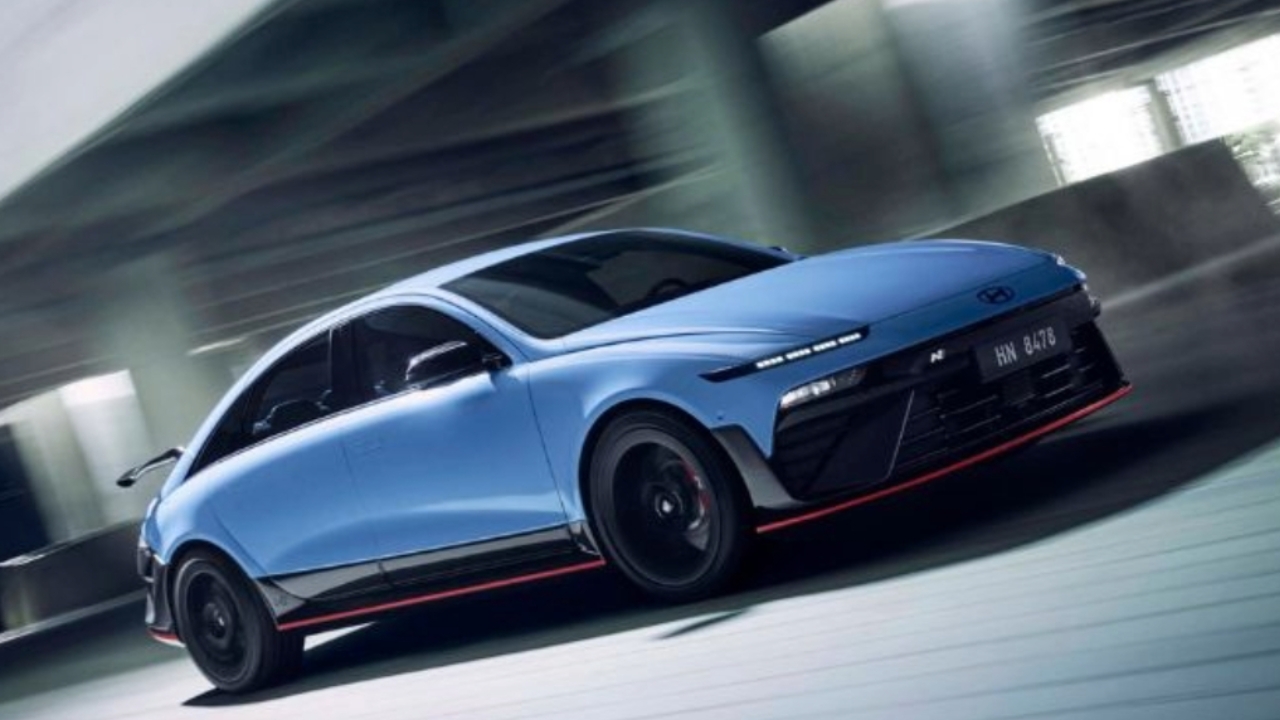The electric performance sedan battle just got more interesting. Hyundai’s IONIQ 6 N shares a powertrain with its predecessor, the 5 N, which means up to 641 horsepower on tap when you click into N-Grin Boost mode, and 567 pound-feet of torque available whenever. This puts it in direct competition with Tesla’s Model 3 Performance, setting up what could be the most compelling EV performance showdown yet.
Power and Performance: Raw Numbers Tell a Story
The IONIQ 6 N takes an early lead on the Tesla Model 3 Performance — on paper, anyway. With 641 horsepower compared to Tesla’s 510 horsepower, Hyundai clearly wins the power war. Both vehicles utilize all-wheel drive and dual electric motors, but the Korean manufacturer has pushed the envelope further.
However, numbers don’t always translate directly to performance. Tesla claims a quicker zero to 60 mph time, estimating the sprint takes just 2.9 seconds, while Hyundai quotes 3.2 seconds for the IONIQ 6 N. The difference likely comes down to weight optimization and Tesla’s years of refinement in electric drivetrain efficiency.
Weight Advantage Goes to Tesla
The fastest Model 3 tips the scales at a fairly light 4,054 pounds. While official IONIQ 6 N weight figures aren’t available, its mechanically identical sibling suggests it will be heavier, potentially explaining Tesla’s acceleration advantage despite less power.
Track-Ready Features and Engineering
Braking Performance
Where Hyundai appears to have a clear advantage is in braking hardware. The Hyundai IONIQ 6 N gets massive brake rotors that dwarf the Tesla Model 3’s, measuring 15.7 inches in the front and 14.1 inches in the rear. This suggests serious track-focused engineering that could give the IONIQ 6 N an edge in repeated high-performance driving scenarios.
Range and Pricing Reality Check
Range Concerns
The IONIQ 6 N faces a significant challenge in range. The mechanically identical 5 N offers an estimated 221 miles, while the Model 3 Performance makes it 298 miles on a full charge. This 77-mile difference could be a deal-breaker for many buyers who want both performance and practicality.
Price Positioning
The IONIQ 6 N will start a little bit higher than the Tesla Model 3 Performance, with an estimated starting price around $60,000 compared to Tesla’s $54,990. This $5,000 premium positions it as a more expensive alternative, requiring Hyundai to justify the cost through superior performance or features.
The Verdict: Competition Drives Innovation
The Hyundai IONIQ 6 N and Tesla Model 3 Performance are more similar than different, and both look to be incredibly competent performance sedans. While the IONIQ 6 N may appear to be more of a sidegrade than an upgrade on paper, it brings meaningful competition to a segment Tesla has largely dominated.
The real winner here might be consumers. At the very least, the competition will force Tesla to take notes, potentially driving both manufacturers to push performance boundaries even further.
Frequently Asked Questions
Q: Which car is faster in a straight line?
A: Tesla Model 3 Performance is quicker to 60 mph (2.9 vs 3.2 seconds) despite having less horsepower.
Q: Does the IONIQ 6 N have better track capabilities?
A: Yes, with larger brake rotors and track-focused engineering, it should perform better in repeated high-performance scenarios.
Q: Which offers better value for money?
A: Tesla starts $5,000 less and offers 77 miles more range, making it potentially better value despite less power.
Also Read:-Tesla UK Sales Surge in June Compared to Same Month Last Year
